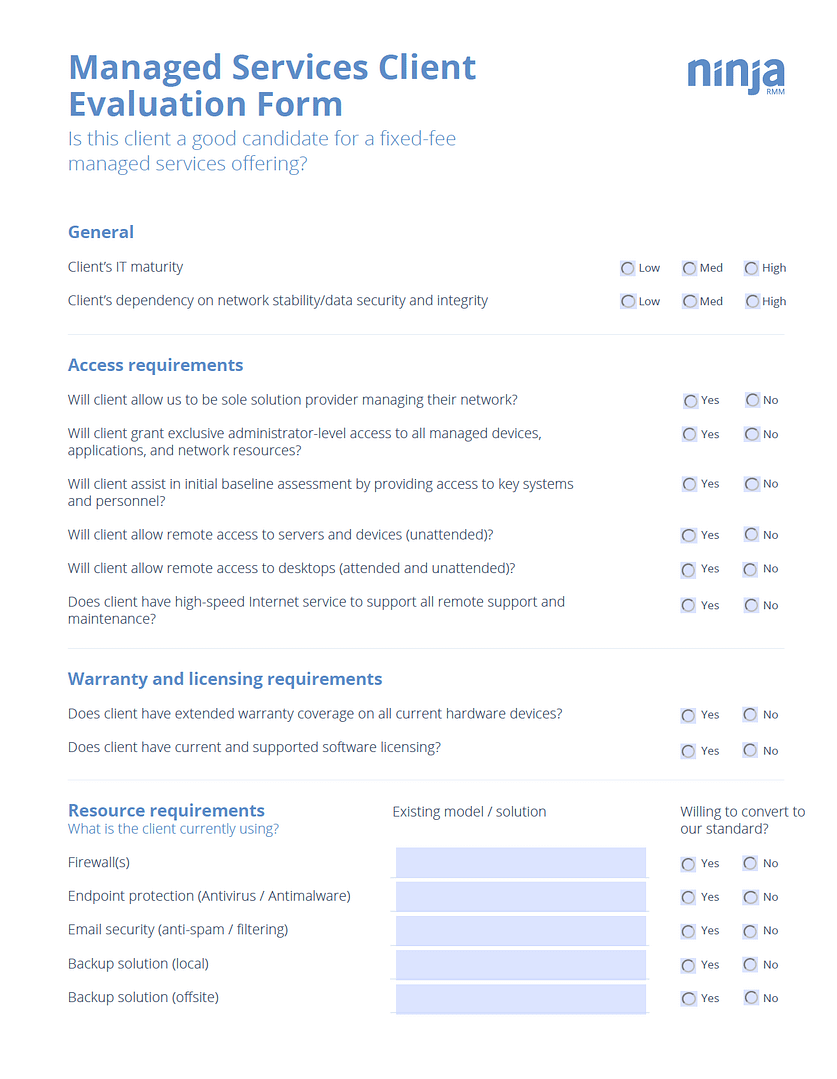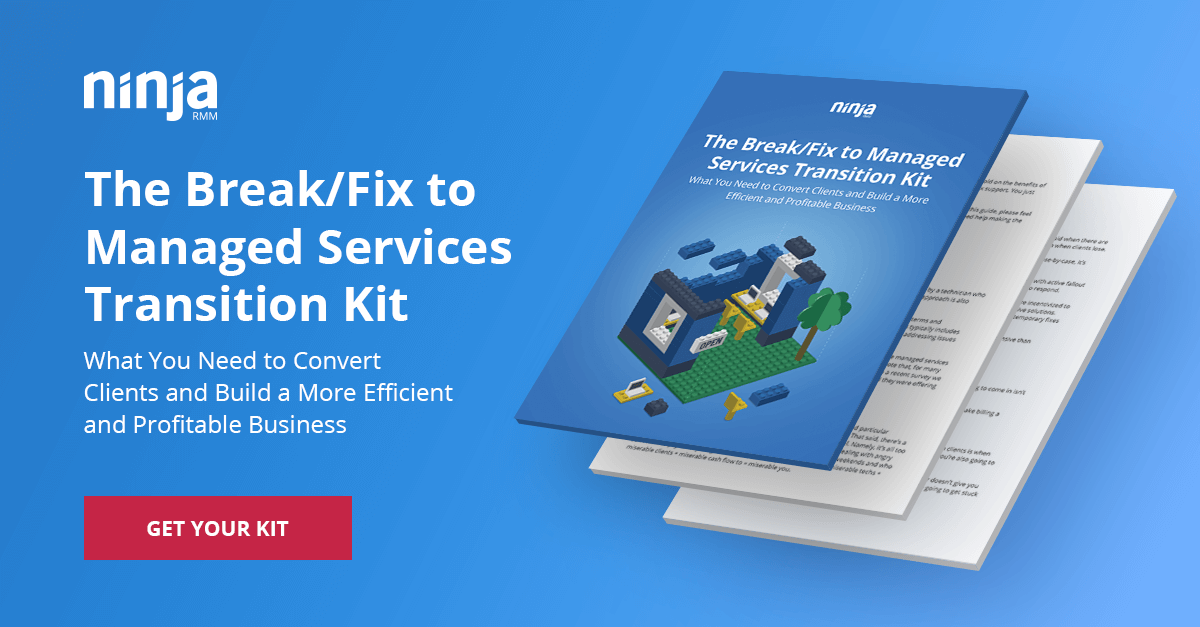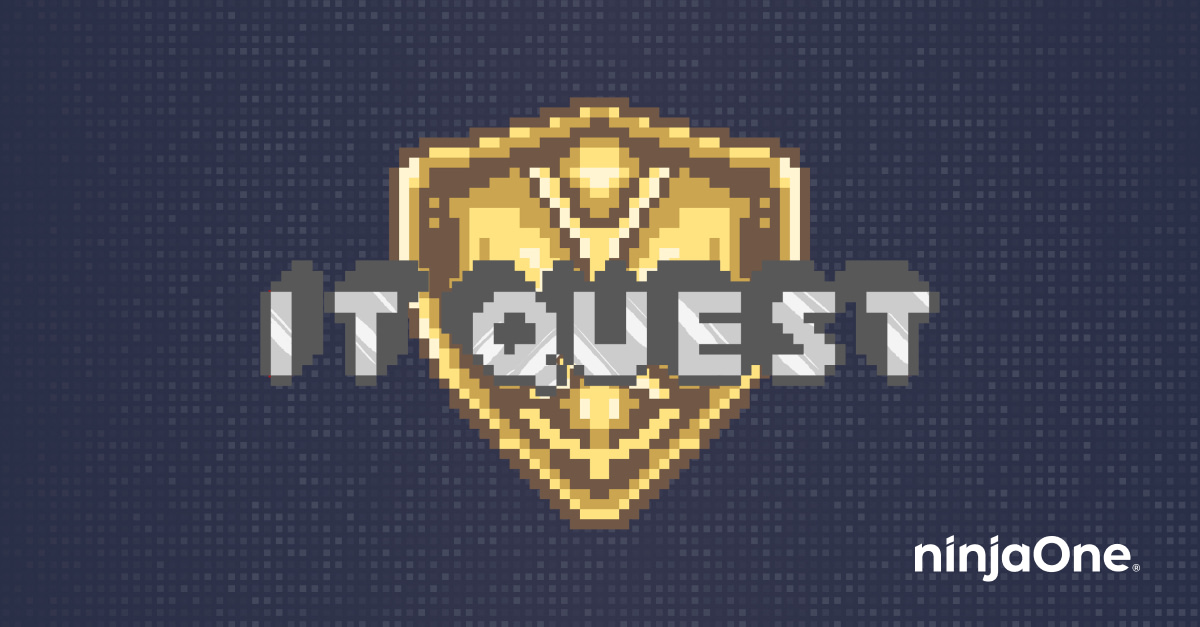Note: The following is an excerpt from The Break/Fix to Managed Services Transition Kit, which includes a 4-step action plan making the switch to managed services along with bonus templates and tools you can use to get started right away.
Transitioning your IT business from a break/fix shop to a managed services shop is no small feat. It often involves completely revamping the way you and your techs work, and it requires you to make a variety of important decisions…
- What exactly is your services offering going to include?
- What PSA and RMM are you going to use?
- What additional tools do you need?
- What are you going to charge?
Each of those questions takes careful forethought and consideration. Answering them will get you ready to make the switch, but what about your current customers?
Unless you’re starting over completely from scratch, you’re going to need to find a way to get existing clients on board.
Remember, transitioning them from the break/fix model they’re accustomed to isn’t always easy for them, either. The good news is if you’ve been cultivating a good relationship and laying the proper groundwork you may be surprised. Some may not bat an eye at all.
Some clients are going to be more receptive than others, and technical maturity is probably going to be one of the biggest key indicators. We’ve created a Managed Services Client Evaluation Form (below) you can use to segment and prioritize your customers in terms of how likely they are to switch.

Click here to download a PDF version
Once you identify a few top candidates, get the ball rolling by approaching them first. If they’re growing rapidly or actively engaging in project work that can give you a natural opening to let them know you have a new offering that’s a better fit for their changing needs.
Keep in mind, the more you position the new offering as a definitive change in your service rather than simply a new option, the more successful you’ll be in getting clients to commit.
Objection handling
Be prepared to respond to predictable objections, including the one Karl Palachuk refers to as “The Killer Objection” — “We’re getting what we need right now.” According to Palachuk, the best response isn’t to argue that they aren’t, but instead to stress what makes your new offering so different from what they’re currently getting.
Smaller clients in particular may also balk at the idea of paying a fixed fee, regardless of whether it’s ultimately comparable to the amount they’ve been paying you in emergency break/fix work. If that’s the case, the key is to show them the past invoices, and remind them of the downtime or inconvenience they suffered while the matter was being resolved. Explain to them that, under the new agreement, all that work would have been covered. No more big, unexpected bills for emergency work. Instead, they get the peace of mind knowing issues are being prevented and tackled immediately, and their payments are going to be smaller, consistent, and spread out over time.
Then show them a list of all the other great things they’ll be getting under your new agreement.
As an incentive, you may consider offering your service package as a 60 or 90-day trial, after which they can cancel if they don’t see the value.
What to do with clients who won’t switch to managed services
Despite how well you lay the groundwork and how convincing you are in your pitch, you may have some clients who just refuse to switch.
In addition, you’ll need to decide what options you’re going to leave available to clients who choose not to transition. As difficult as it can be, the approach many successful MSPs recommend is showing them the door.
Ex: This MSP fired customers that accounted for 25% of his company’s revenue, and he only had one regret — that he didn’t do it sooner.
Firing clients may seem drastic, but keep in mind the clients most likely to resist managed services are your problem clients who take up a disproportionate amount of time and resources and bring in little revenue. Keeping one foot in the break/fix game just to support them isn’t a position you want to be in.
The easiest way to cut ties with problem clients is to let them know you’re requiring every client you support sign a service level agreement (SLA). They don’t have to sign, but if they don’t you’ll no longer be able to support them.
If you have good clients who, for whatever reason, just aren’t ready to switch, another option is to keep them on while raising their rates and steering them toward block-time billing as a stepping stone. Just keep in mind, the highest performing MSPs have gotten to where they are by standardizing their offering, standing by its value, and saying no to opportunities that aren’t a good fit. The less time taken up by break/fix customers, the more time you can spend on acquiring and supporting more profitable managed services clients.
Recap: Key Do’s and Don’ts
- DO evaluate your current clients. Identify and prioritize the ones most likely to switch.
- DON’T be shy about laying the groundwork early. Point out work that will be covered under your new agreement, and keep tabs on how much break/fix work is costing clients.
- DO prepare for common objections. A big one is, “we’re already getting what we need.”
- DON’T be afraid of losing problem clients. If they don’t want to make the switch it’s a good excuse for you to part ways.
- DO consider offering a trial period. But be firm that this is a change you’ve committed to, and you need clients to commit to it, too.
Next step: Download our free guide
Looking for more actionable advice on providing managed services? Check out our Break/Fix to Managed Services Transition Kit. It provides a 4-step action plan you can follow PLUS some additional templates/tools that can give you an easy jumpstart.









